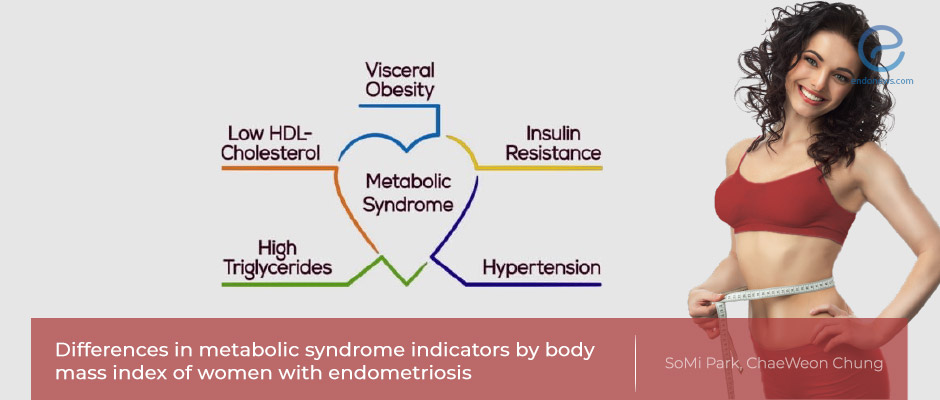Body Mass Index and indicators of metabolic syndrome in women with Endometriosis
Oct 18, 2021
Understanding the relationship between body mass index and indicators of metabolic syndrome in endometriosis may help to prevent comorbid health conditions, and promote reproductive health.
Key Points
Highlights:
- Comorbid health indicators that depend on common pathophysiological backgrounds with other chronic health conditions reveal a relationship in endometriosis patients.
Importance:
- Women having endometriosis should be aware of the importance of the differences and changes in metabolic syndrome indicators related to body mass index.
What’s done here?
- A retrospective observational study was conducted on more than 280.000 reproductive-age endometriosis patients by using BMI and metabolic syndrome indicators extracted from the National Health Insurance Service data of the Republic of Korea.
- Metabolic syndrome indicators (waist circumference, blood pressure, fasting blood sugar, high-density lipoprotein), BMI, cholesterol, and triglyceride levels were analyzed.
- The alterations of the above parameters between the study years were also evaluated.
Key results:
- Approximately 8% of endometriosis patients were underweight, 18.4% and 17.6% were overweight and obese, respectively.
- The change in all metabolic syndrome indicators showed an increasing trend from 2009 through 2016.
- Abnormally low high-density lipoprotein cholesterol levels were the most common indicator of metabolic syndrome among women with endometriosis.
- The abnormality for all indicators significantly increased as BMI increased from underweight to obesity.
Limitations:
- The fact that this study did not include a comparison with the control group without endometriosis could be presented as the limitation of the study.
Lay Summary
Endometriosis is a disease of reproductive-aged women and has common pathophysiological mechanisms with other chronic health morbidities due to its estrogen-dependent chronic inflammatory background. The changes in the inflammatory components of adipose tissue may have an impact on the quality of life in women with endometriosis since the key hormone for this disease is estrogen, and estrogen can be produced by adipose tissue.
Park and Chung, from Korea, published a study titled “Differences in metabolic syndrome indicators by body mass index of women with endometriosis” in the journal Nursing Open.
The authors aimed to explain the relationship between body mass index and metabolic indicators and how they have changed over the years in patients with endometriosis. For this purpose, they analyzed BMI and metabolic variables such as waist circumference, blood pressure, fasting blood sugar, high-density lipoprotein cholesterol, and triglyceride levels. Yearly changes in all metabolic parameters were statistically significant. Abnormally low high-density lipoprotein cholesterol levels were determined to be the most common indicator of metabolic syndrome among women with endometriosis. Additionally, as BMI increased, the abnormal findings for all metabolic indicators significantly increased.
“Both future research and clinical practice should utilize a greater variety of health measures and lifestyle factors to understand the health status of women with endometriosis in broader ways and to apply guidelines for the early prevention of comorbid health conditions.” the authors added.
Research Source: https://pubmed.ncbi.nlm.nih.gov/34469076/
body mass index endometriosis metabolic syndrome women waist circumference blood pressure fasting blood sugar high-density lipoprotein cholesterol and triglyceride

